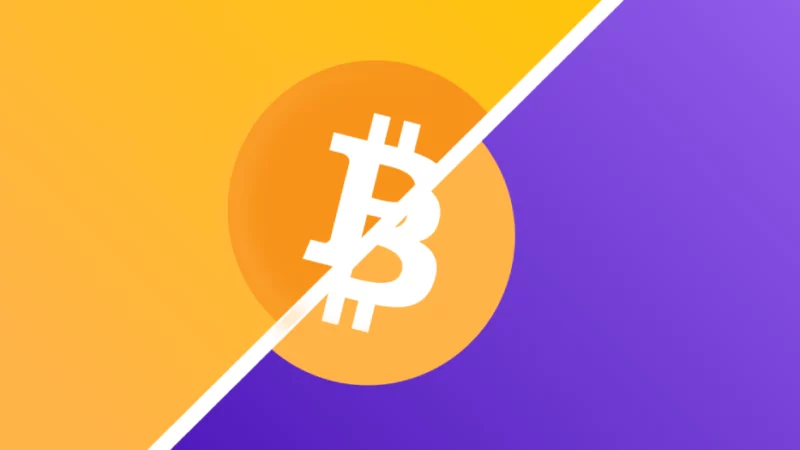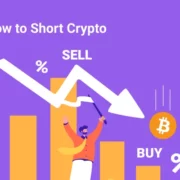
Bitcoin halving, also known as “the halvening,” is a significant event that occurs every 210,000 blocks mined on Bitcoin’s blockchain, which is approximately at four-year intervals. During this event, the reward for Bitcoin miners successfully validating transactions on the Bitcoin network is reduced by half. The purpose of halving is to control the supply of Bitcoin and ultimately cap the maximum number of Bitcoins in circulation at 21 million.
Halving is a critical component of Bitcoin’s monetary policy and ensures a predictable and limited supply of Bitcoin. The reduced block rewards incentivize miners to acquire more sophisticated mining equipment to mine cost-effectively to validate transactions and maintain the network’s security. The reduction in Bitcoin supply also tends to increase demand and can impact Bitcoin’s price over time.
Bitcoin halvings have historically been associated with significant price increases in Bitcoin, as the reduced supply coupled with increased demand can lead to a scarcity-driven bull market. As such, halving has become a highly anticipated event for Bitcoin investors, traders, and enthusiasts.
Staying up-to-date with Bitcoin halving dates is critical for investors and traders for planning investment strategies and predicting market movements.
With the next halving expected to occur shortly, now is the time to understand the significance of this event and how it can impact the future of Bitcoin. Whether you choose to accumulate Bitcoin in anticipation of the halving or sell your holdings in anticipation of a possible price drop after the event, missing a halving event can result in missed opportunities.
So why does Bitcoin halve, how does Bitcoin halving work, how many Bitcoin halvings have occurred, and what are future Bitcoin halving dates?
Read on to learn how the Bitcoin halving cycle works and stay up-to-date with the next Bitcoin halving dates.
When Is Bitcoin’s Next Halving?
The next Bitcoin halving is one of the most highly anticipated events in the crypto market and for a good reason. The upcoming halving will have the Bitcoin block rewards cut in half – from 6.25 BTC to 3.125 BTC per block. This event will have significant implications for the Bitcoin market, including the Bitcoin price, mining profitability, and network security.
The date of the next Bitcoin halving event is determined by the block height of the Bitcoin blockchain. Based on the current block height, the expected date of the next halving is estimated to occur in 2024. However, the BTC halving date may vary due to the unpredictable nature of the Bitcoin mining process.
The timing of the Bitcoin halving event is a crucial piece of information for investors and traders, as it can affect the supply and demand dynamics of the cryptocurrency. The halving event is expected to impact the market significantly, and being aware of its timing can help make informed investment decisions. Investors can use this knowledge to position themselves for Bitcoin’s price movements, while traders can capitalize on the increased volatility accompanying halving events.
Bitcoin Halving Dates History
Bitcoin halving is an event that occurs every 210,000 blocks, reducing the Bitcoin block reward for miners by 50%. Since Bitcoin’s launch in 2009, there have been three halving events, and the last Bitcoin halving occurred on May 11, 2020.
The first Bitcoin halving happened in November 2012, the second halving occurred in July 2016, and the third halving event took place in 2020. All past Bitcoin halvings have historically had a significant impact on the Bitcoin market, with prices soaring in the months leading up to the event and then experiencing increased volatility immediately following. Bitcoin’s finite supply and the decreasing mining reward due to halving events make it an attractive investment for long-term holders who believe in its potential as a store of value. Understanding the history of Bitcoin halving dates is essential for investors and traders to make informed decisions and prepare for the potential impact of future halving events.
Halving events impact the Bitcoin market in several ways. First, halving events reduce the rate at which new bitcoins are created, limiting the supply of bitcoins. This can lead to increased demand for the cryptocurrency, increasing its price. Second, halving events can lead to reduced mining profitability, which can cause miners to exit the market, reducing network security.
The first Bitcoin halving event reduced the block reward from 50 to 25 bitcoin per block. Following this halving event, BTC price increased from around $11 to over $1000 in 2013. Similarly, the second Bitcoin halving reduced the mining rewards from 25 to 12.5 BTC. After this halving event, the price of Bitcoin increased from around $650 to over $19,000 in 2017, representing an almost 3000% increase in value. The third halving reduced the Bitcoin rewards from 12.5 to 6.25 BTC, further reducing the rate at which new bitcoins were introduced into the market. Following the last halving event in 2020, Bitcoin’s price surged from around $8,500 to a new all-time high of over $64,000 in April 2021, marking a more than sevenfold increase in value in less than a year. The next Bitcoin block reward is scheduled to drop from 6.25 to 3.125 bitcoin per block.
These historical events demonstrate the significant impact that Bitcoin halvings can have on the market and underscore the importance of staying up-to-date with the next halving date for investors and traders alike.
While past performance is not indicative of future results, these previous halving events provide insights into how the upcoming halving event could impact the Bitcoin market.
What Happens When Bitcoin Halves?
Bitcoin mining involves solving complex mathematical problems to validate transactions and create new blocks. The software requires computers in the network to compete to verify transactions and rewards them with several new bitcoins when they can prove that the transactions are valid. The Bitcoin network is designed to generate new blocks every ten minutes through the Bitcoin mining algorithm. As the number of miners increases and more hashing power is added to the network, the time it takes to find blocks decreases. The mining difficulty is periodically reset to maintain a 10-minute block generation objective, usually once every two weeks. This adjustment ensures that mining Bitcoin remains competitive and that new blocks are generated at a consistent rate, regardless of the amount of computing power in the network.
The Bitcoin network has a pre-programmed ” halving ” feature that controls the rate of new bitcoin creation. Blocks of transactions are verified, and the software automatically reduces the reward received by miners by half every 210,000 blocks. When a Bitcoin halving event occurs, the block rewards miners receive for solving complex mathematical equations and adding a new block to the blockchain is reduced by half. This means that the total supply of Bitcoin decreases with the reduction of new bitcoins in circulation. The Bitcoin network is designed to have a maximum supply of 21 million coins, and the halving events play a critical role in ensuring that this limit is reached gradually and predictably over time. Bitcoin’s inflation rate is also reduced due to the halving event.
The reduction in block rewards can also significantly impact the market, as it increases the scarcity of bitcoins and can potentially lead to an increase in the BTC price. The decreased profitability for miners after a halving event can reduce the hash rate of the network as less powerful mining equipment becomes unprofitable, resulting in longer block times and a slower confirmation process for transactions.
Bitcoin halving events are an essential mechanism for controlling the supply of cryptocurrency and have significant implications for both miners and investors in the market. It’s a vital feature of the Bitcoin network that ensures the gradual and controlled release of new coins while maintaining stability and reliability.
Factors Influencing the Bitcoin Halving Timing
Bitcoin halving dates are determined by the Bitcoin network’s protocol, which is designed to ensure a fixed supply of 21 million Bitcoins. Several factors can influence the timing of Bitcoin halving events.
One of the most important factors is the mining difficulty of the Bitcoin network. The mining difficulty is adjusted periodically to ensure new blocks are generated every 10 minutes. This difficulty adjustment is based on the total computing power of the network and the number of miners competing to validate transactions. The more miners in the network, the faster blocks are generated, and the more complex the mining process becomes, leading to a more extended period between halving events.
Another factor influencing the Bitcoin halving timing is the block reward itself. The initial block reward was 50 bitcoins, and this reward is halved every 210,000 blocks. As the reward decreases, the number of newly minted bitcoins entering circulation also decreases, which can affect the demand for the cryptocurrency and, in turn, its price. The market’s perception of the Bitcoin supply and demand dynamics plays a significant role in determining the timing of halving events.
Lastly, Bitcoin’s overall growth and adoption also play a role in the timing of halving events. As more people and institutions adopt Bitcoin, the demand for the cryptocurrency increases, potentially leading to a shorter period between halving events. In contrast, if the adoption of Bitcoin slows down, it may take longer for the network to reach the threshold for the next halving event.
The tendency for more extended in-between periods between halvings is due to the fact that the network’s hash rate tends to increase over time as more miners join the network and add more computing power. The extended periods could also reflect the maturing Bitcoin market, in which there is an increasing focus on transaction fees as a source of revenue for miners, as opposed to block rewards. Additionally, the increasing use of scaling solutions such as the Lightning Network can help reduce the overall load on the Bitcoin network and potentially lead to more extended periods between halvings.
Ultimately, the timing of Bitcoin halving is a function of a complex interplay of various factors that affect the supply and demand of the cryptocurrency.
Why Keep Track of Bitcoin Halving Dates?
Bitcoin halving is a significant event in the cryptocurrency world that occurs approximately every four years. During this event, the reward that miners receive for mining a new block on the Bitcoin blockchain is cut in half. This event reduces the rate at which new bitcoins are created, and it significantly impacts the supply and demand dynamics of Bitcoin.
Traders can profit from the BTC halving by speculating on Bitcoin price movements in the weeks and months surrounding the event. Contracts for difference (CFD) is a popular way to speculate on it because they enable you to go long or short.
Here are some reasons why it’s essential to keep track of Bitcoin halving dates:
- Scarcity: Bitcoin halving reduces the rate at which new bitcoins are created, making them scarcer. Scarcity can increase demand, leading to a rise in Bitcoin’s value.
- Predictability: Bitcoin halving occurs every four years, and it’s a predictable event. By knowing the halving dates, investors and traders can plan their investment strategies and make informed decisions based on historical trends.
- Mining profitability: Bitcoin miners receive rewards in the form of new bitcoins for mining new blocks. When the reward is halved, it can significantly impact the profitability of mining. Miners need to adjust their operations accordingly, and keeping track of the halving dates can help them plan for this.
- Market sentiment: The halving event can psychologically impact the market sentiment. If investors perceive the halving as bullish, it can lead to increased demand and a rise in Bitcoin’s price.
Overall, traders who want to invest in or trade Bitcoin should keep track of Bitcoin halving dates to understand Bitcoin’s supply and demand dynamics and make informed investment decisions.
Conclusion
Bitcoin halving events significantly impact the supply and demand of Bitcoin and its market value. Based on the current block height, the upcoming halving event is expected to occur in 2024.
Past halving events have led to significant increases in Bitcoin’s market value, although there are no guarantees that the same will happen in the future. It’s crucial for investors and traders to stay informed about the Bitcoin halving schedule and its potential impact on the market.
By understanding the factors that determine the timing of halving events and exploring the Bitcoin halving Chart to study Bitcoin’s inflation rate within a specific period, you can better prepare for the changes in the Bitcoin market and stay ahead of the curve.
With the next Bitcoin halving event just around the corner, it’s more essential than ever to keep an eye on the Bitcoin halving countdown!
Disclaimer: All information provided in or through the CoinStats Website is for informational and educational purposes only. It does not constitute a recommendation to enter into a particular transaction or investment strategy and should not be relied upon in making an investment decision. Any investment decision made by you is entirely at your own risk. In no event shall CoinStats be liable for any incurred losses. See our Disclaimer and Editorial Guidelines to learn more.






